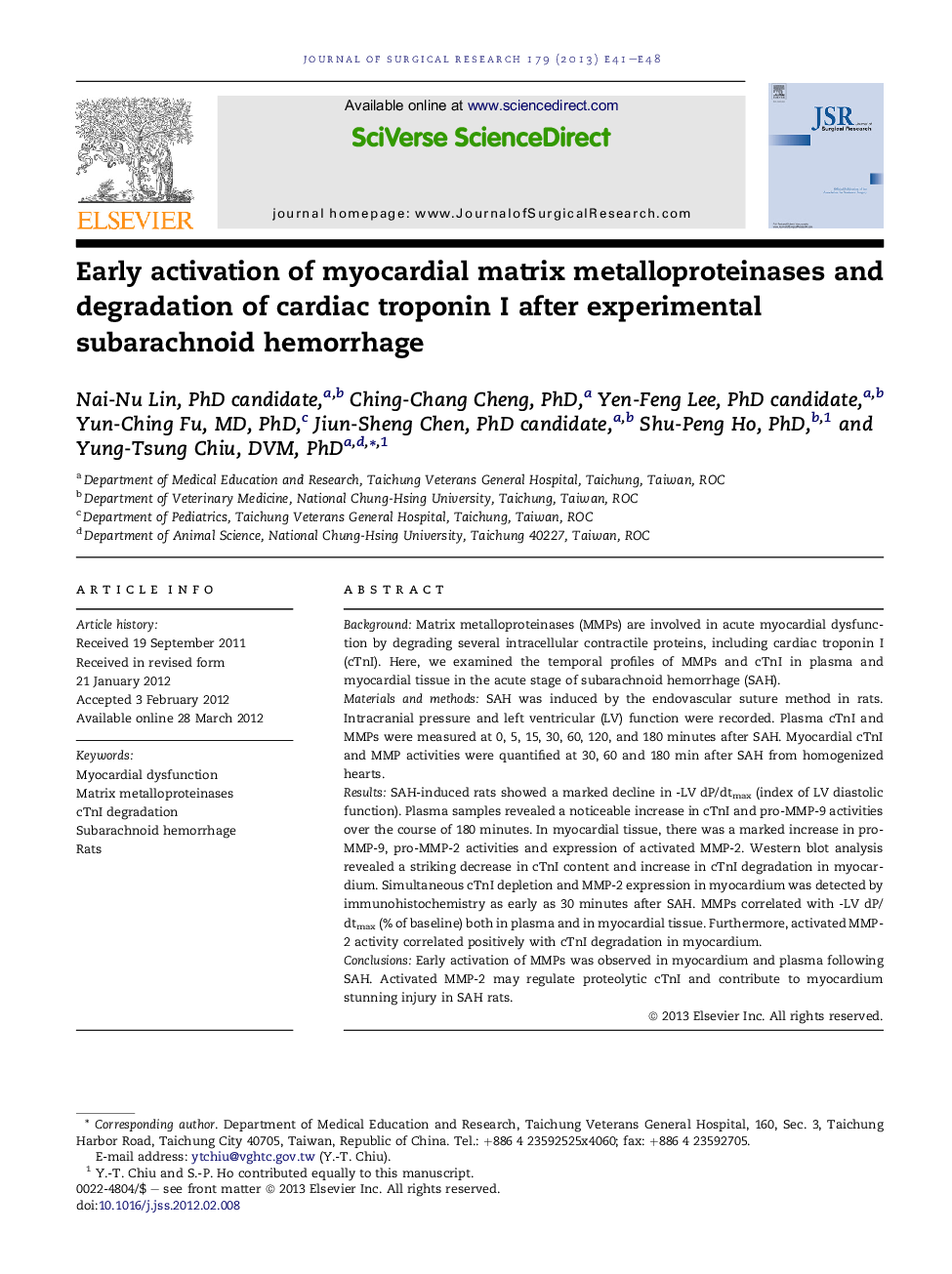| Article ID | Journal | Published Year | Pages | File Type |
|---|---|---|---|---|
| 4301099 | Journal of Surgical Research | 2013 | 8 Pages |
BackgroundMatrix metalloproteinases (MMPs) are involved in acute myocardial dysfunction by degrading several intracellular contractile proteins, including cardiac troponin I (cTnI). Here, we examined the temporal profiles of MMPs and cTnI in plasma and myocardial tissue in the acute stage of subarachnoid hemorrhage (SAH).Materials and methodsSAH was induced by the endovascular suture method in rats. Intracranial pressure and left ventricular (LV) function were recorded. Plasma cTnI and MMPs were measured at 0, 5, 15, 30, 60, 120, and 180 minutes after SAH. Myocardial cTnI and MMP activities were quantified at 30, 60 and 180 min after SAH from homogenized hearts.ResultsSAH-induced rats showed a marked decline in -LV dP/dtmax (index of LV diastolic function). Plasma samples revealed a noticeable increase in cTnI and pro-MMP-9 activities over the course of 180 minutes. In myocardial tissue, there was a marked increase in pro-MMP-9, pro-MMP-2 activities and expression of activated MMP-2. Western blot analysis revealed a striking decrease in cTnI content and increase in cTnI degradation in myocardium. Simultaneous cTnI depletion and MMP-2 expression in myocardium was detected by immunohistochemistry as early as 30 minutes after SAH. MMPs correlated with -LV dP/dtmax (% of baseline) both in plasma and in myocardial tissue. Furthermore, activated MMP-2 activity correlated positively with cTnI degradation in myocardium.ConclusionsEarly activation of MMPs was observed in myocardium and plasma following SAH. Activated MMP-2 may regulate proteolytic cTnI and contribute to myocardium stunning injury in SAH rats.
